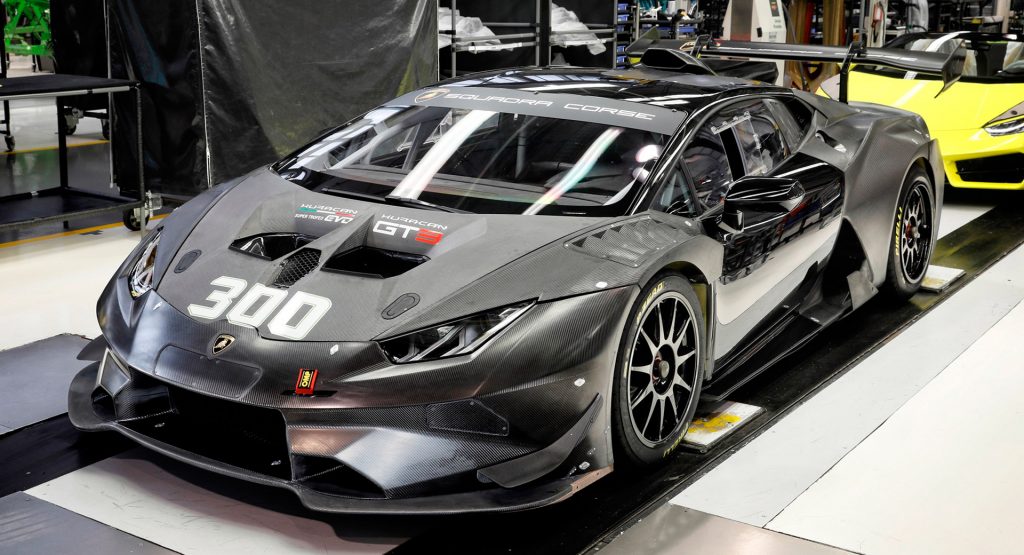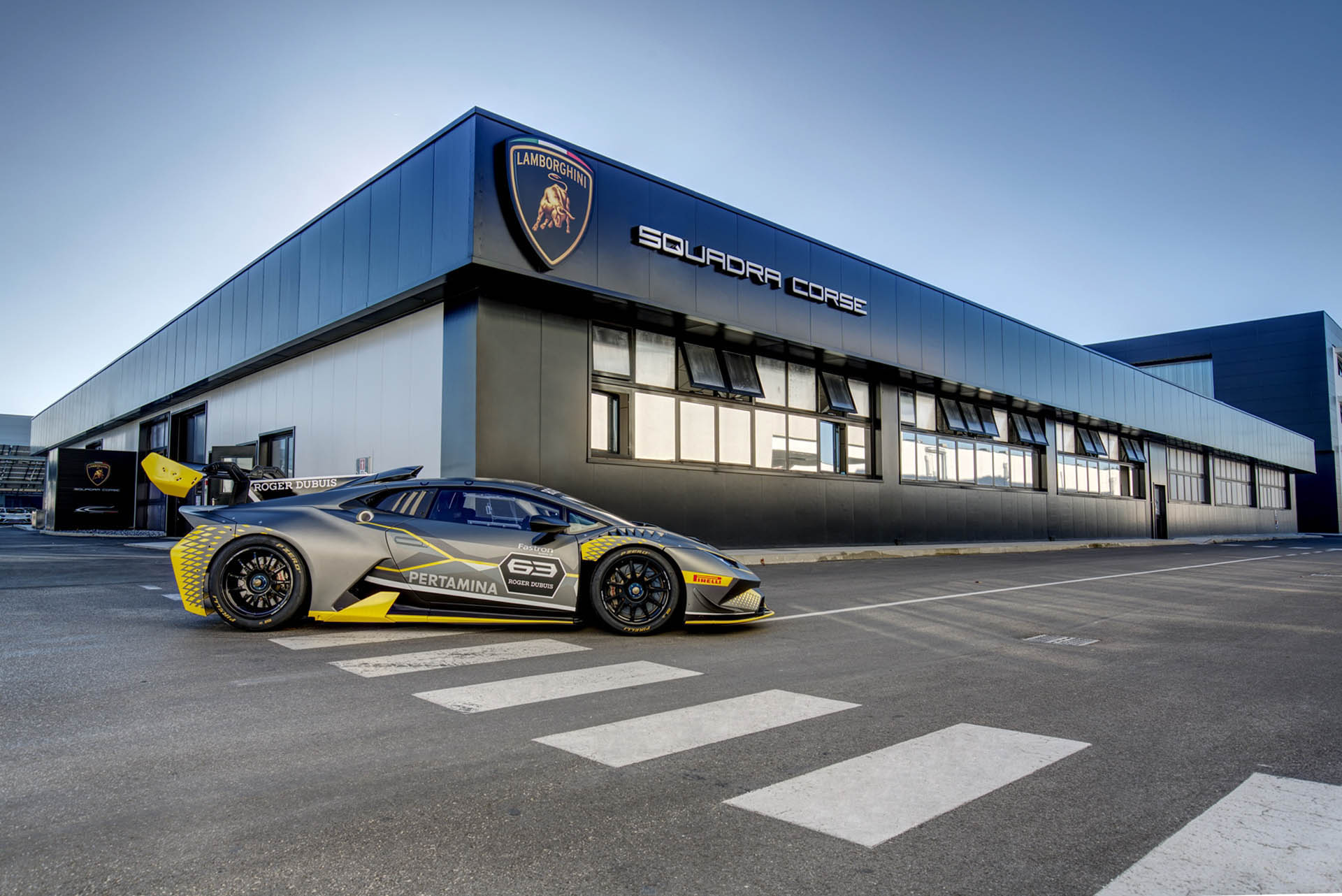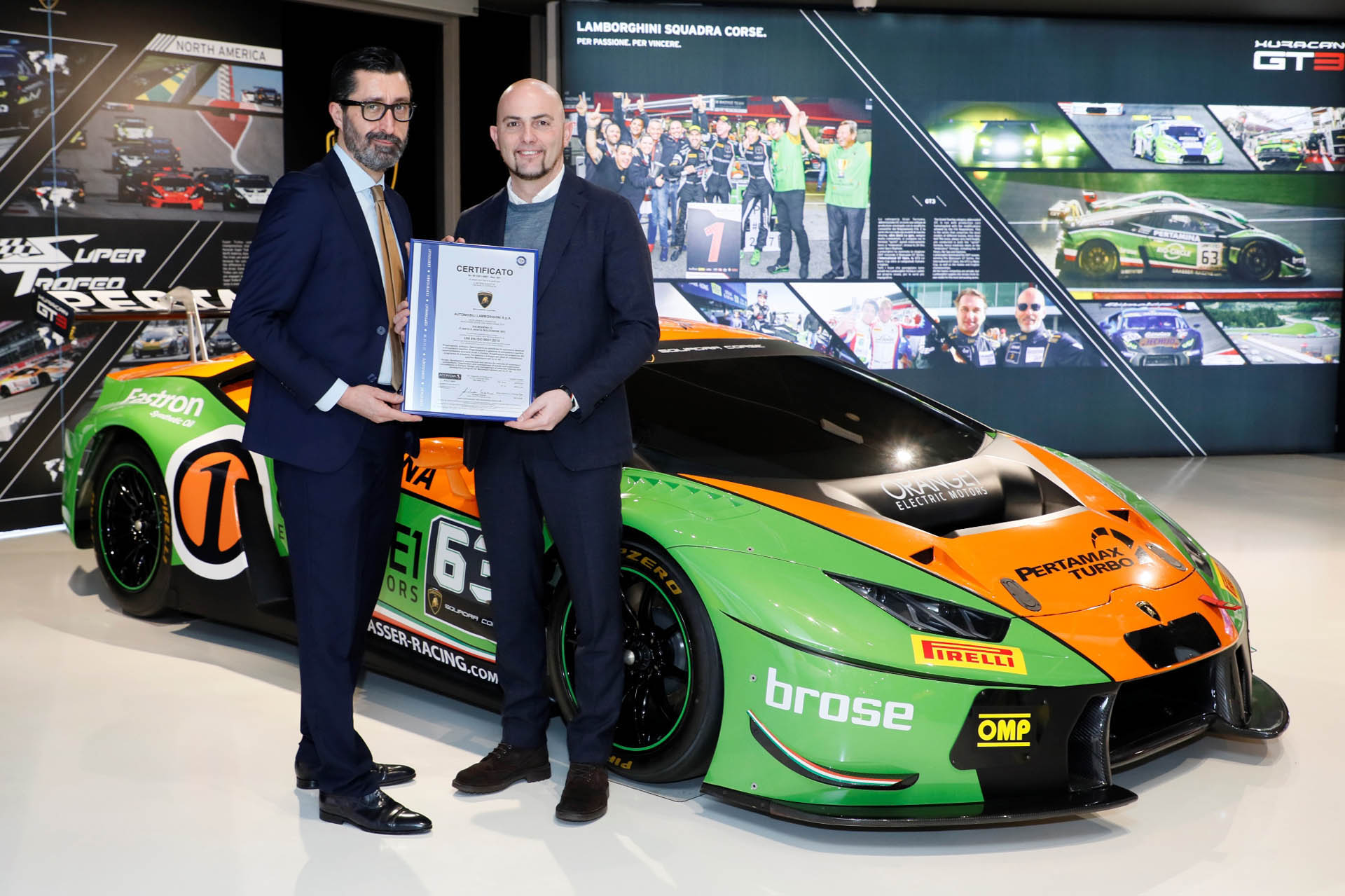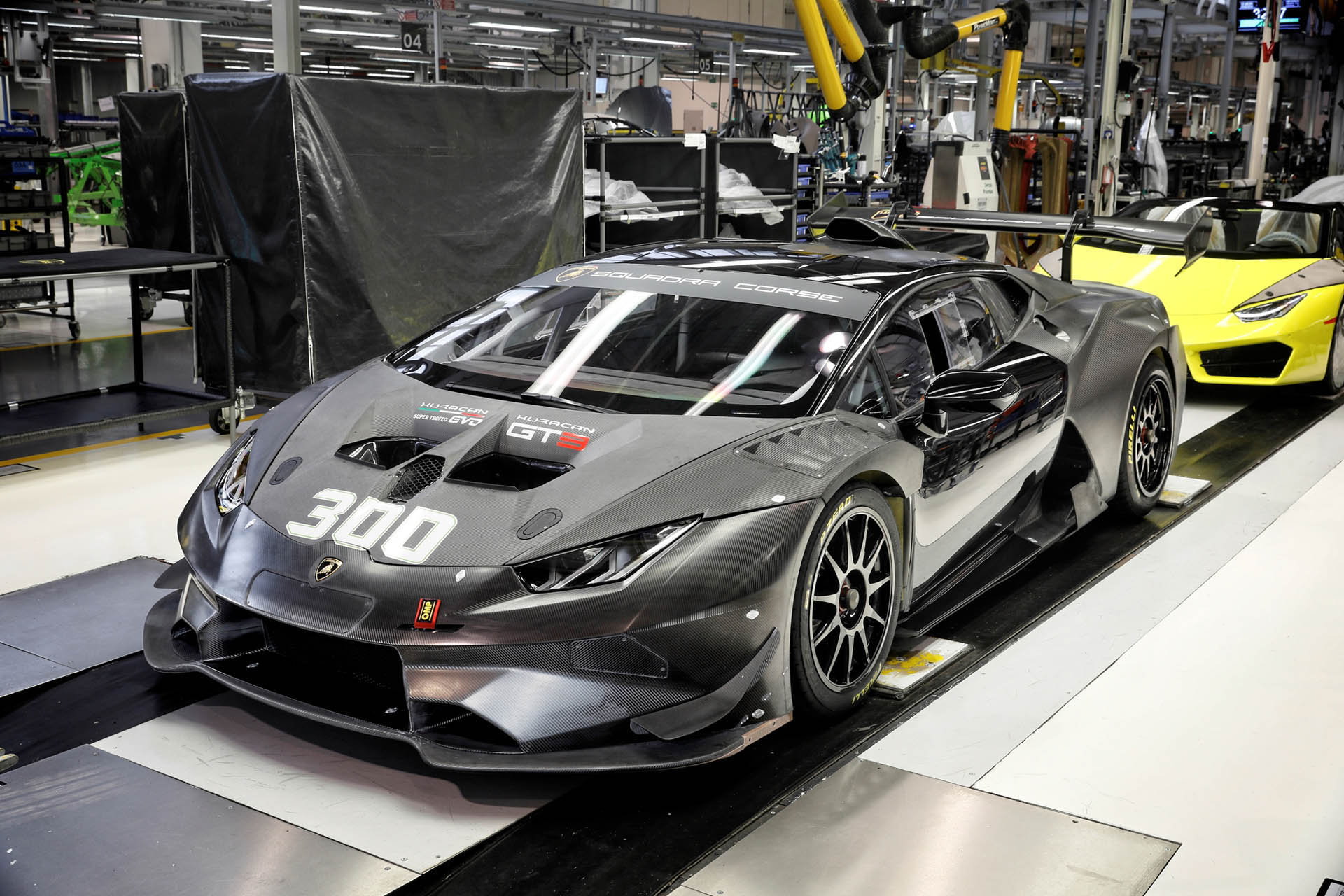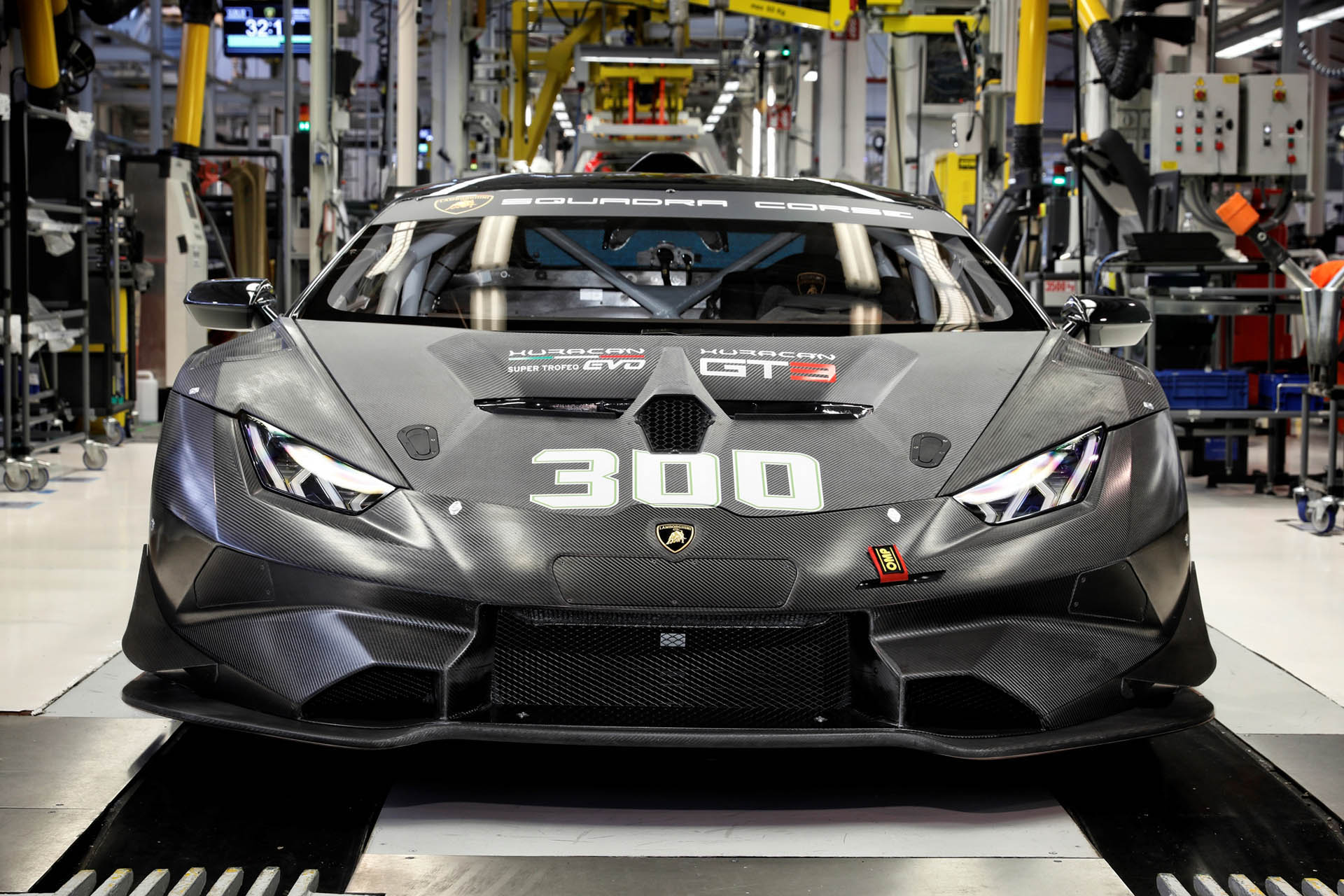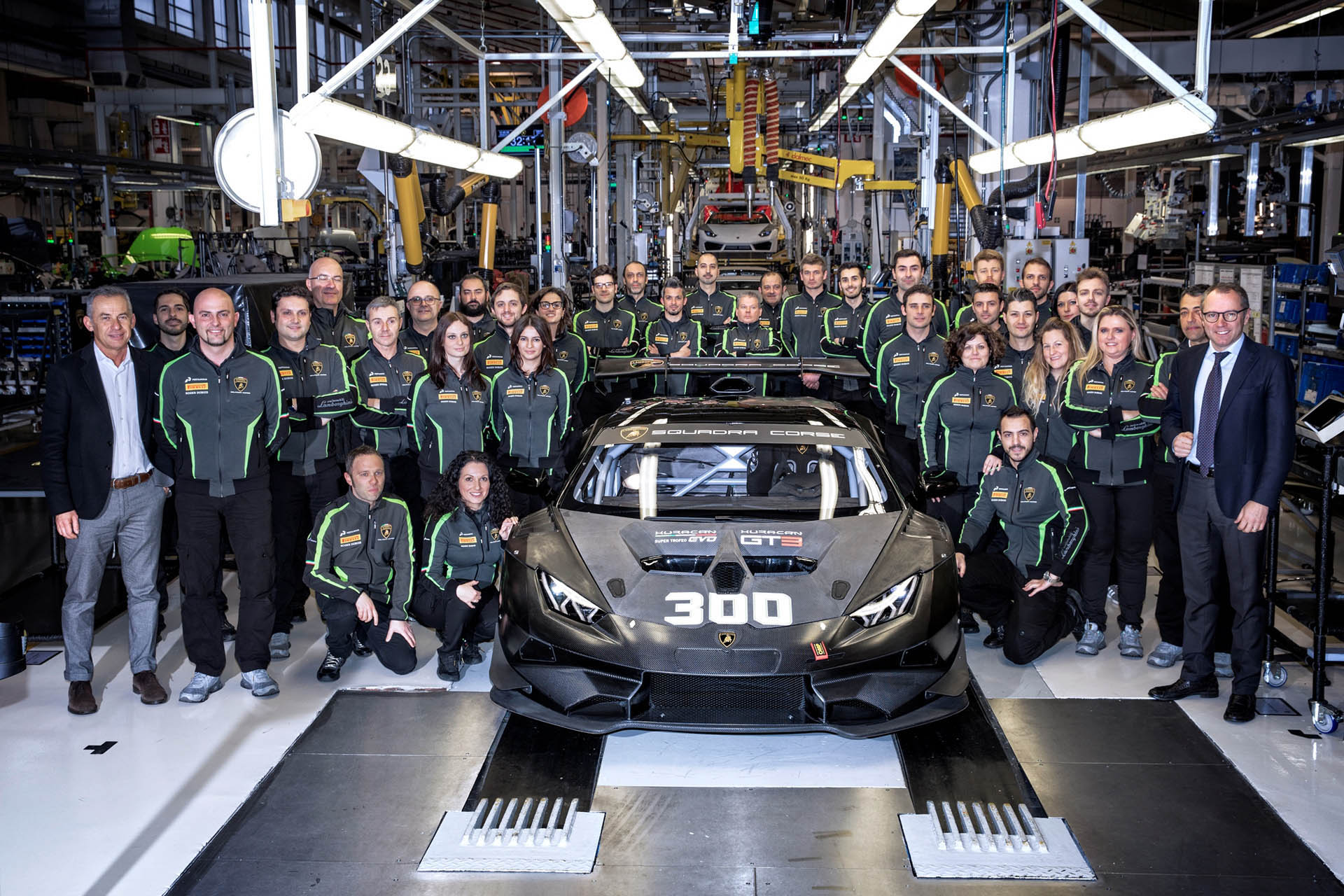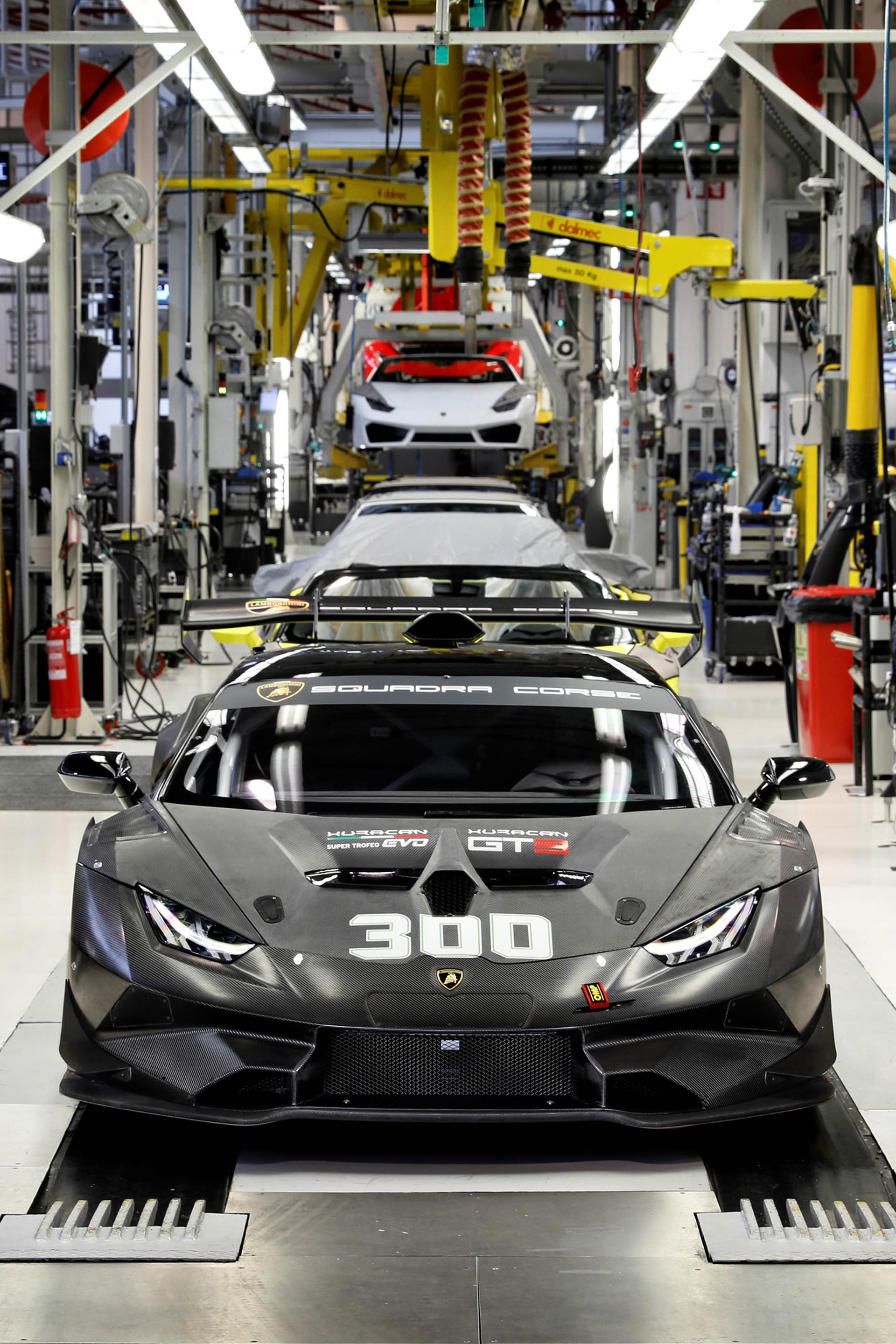When Lamborghini first hit the sports-car scene, it made 120 examples of the 350GT. Then it made another 247 of the 400GT, and 225 of the Islero.
Each remained in production for two or three years before being replaced. Now 55 years later, it’s taken about the same amount of time to built 300 racing versions of the Huracan.
Not total versions of the road-going Huracan. It’s already made 10,000 of those. We’re referring strictly to the racing models – the Super Trofeo and the GT3 versions that are made specifically for motorsport competition.
Lamborghini Squadra Corse has produced the 300th example of those in the past 36 months – which just goes to show how far the Italian automaker has come, in terms of production, in the past half-century plus.
“In 2017, for the seventh consecutive year, Automobili Lamborghini set a new production record, with 3815 road cars delivered,” said Lamborghini chief executive Stefano Domenicali. “Equally extraordinary is the number of racing cars that Lamborghini Squadra Corse has produced in just three years since the launch of the Huracán Super Trofeo and Huracán GT3, proving that the growth trend of our brand is definitely positive also with regards to Motorsport customers.”
Read: Hammond Goes From Unimpressed To Gaga Over The Huracan Performante
The news follows shortly after parent company Audi’s announcement of having completed the 50th example of the new R8 LMS GT4, just a few months after having started. Building customer racing cars has clearly become big business for the Volkswagen Group and all its subsidiaries – each of which offers its own competition machinery to privateer teams, save for Bugatti.
The 300th vehicle is a Huracan Super Trofeo Evo, the recently revised model which serves as the backbone of the spec racing series the company runs in Europe, Asia, and North America. The Huracan GT3, meanwhile, is dispatched for competition in open series, where it competes with rival machinery from other manufacturers – including the Continental GT3 and 911 GT3 R from its sister companies Bentley and Porsche.
Both of Sant’Agata’s racing models are built along the same assembly line as their road-going counterpart, with specially trained technicians following them along the line to apply the competition-specific components.
“The fact of building racing cars by applying the same model of the series production,” says chief engineer Maurizio Reggiani, “is a considerable added value. In this way, production times are reduced and the highest quality control standards are guaranteed, which, in the case of a racing car, translates into greater reliability on track.”



